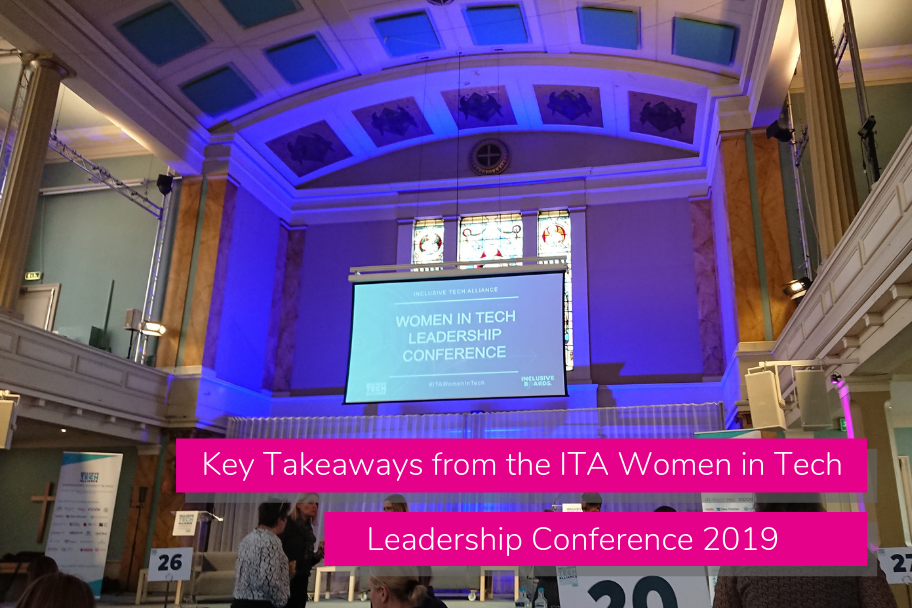Some of us from team Claromentis journeyed from our offices in Brighton to attend the ITA Women in Tech Leadership Conference in London last week. And what an impactful and inspiring day it was!
It’s well known that the tech industry has a problem with diversity and inclusion; we wrote on International Women’s Day that only 17% of roles in the UK tech sector are women, with only 11% of women in senior positions. Led by Meri Williams, CTO of Monzo and Barbara Kasumu, Co-founder of Inclusive Boards, the Women in Tech Leadership Conference was a day to reflect on statistics just like these, and discuss what businesses can do to improve their diversity and inclusion.

Team Claromentis at the Women in Tech Leadership Conference St Marys in London
Here’s what we learnt on the day:
Complete management buy-in for diversity & inclusion is essential
D&I (diversity and inclusion) is often tacked onto the end of a business strategy as an afterthought, and then either owned solely by HR to implement, or sits on the shoulders of individuals who want to actively improve D&I.
For D&I to be truly meaningful and impactful, it’s essential that senior management buys into it 100%. “HR shouldn’t own D&I. It should be owned by the business and measured actively in the business, and be part of the performance of leaders. If it’s at the heart of a business then it’s everyone’s job to champion it,” explained Joyce Adeluwoye-Adams, Global Director of Diversity & Inclusion at King during a panel discussion. Sarah Atkinson, Vice Chair at Tech UK agreed: “The most successful [D&I] is when there is 100% buy in from senior leadership and accountability through the business. When there is this sense of urgency we start to see change.” Adeluwoye-Adams finished with a call-to-arms to all the people in the room: “Ask your leaders where the D&I strategy is – every business needs to have one. You can’t just think about diversity when a crisis happens.”
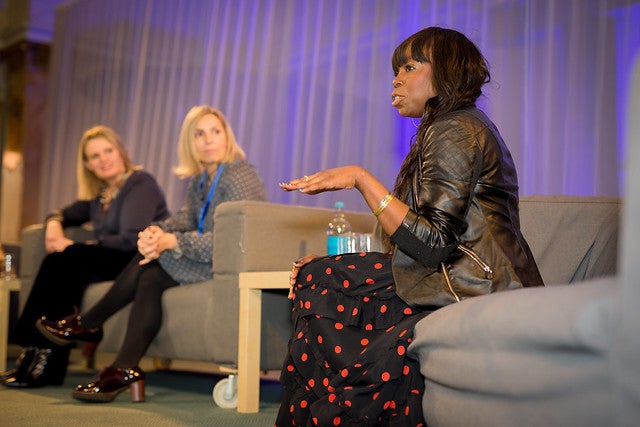
Discussion panel with (L-R) Sarah Atkinson, Vice Chair at TechUK; Maria Hernandez, Head of Innovation at Cisco; and Joyce Adeluwoye-Adams MBE, Global Director at King. (Photo credit: Dan Rvlph Photography).
Tech is at “toddler stage” when it comes to diversity & inclusion
Despite the tech industry being at the centre of innovation and creativity, it’s way behind when it comes to D&I in the workplace.
“Tech is at toddler stage in terms of D&I,” said Adeluwoye-Adams, “I remember walking into my first tech boardroom and being like ‘Wait what? Is this Mad Men?’ I was the only woman and only ethnic minority in the room”.
Dr Hayaatun Sillem, CEO at Royal Academy of Engineering, also shared her insights into D&I in the STEM (science, technology, engineering, and mathematics) community, in particular engineering. Only 12% of engineering roles are made up of women, with just 8% from ethnic minorities. When looking at STEM education, only 15% of engineering students are female, despite them generally outperforming males throughout GCSE and A Level studies. So there is a fundamental challenge to attracting women to a career in STEM and closing the D&I gap.

Only 12% of engineering roles are made up of women
Diversity and inclusion benefits everyone
“Inclusive leadership is good leadership, and this idea needs to be really owned by the business” declared Dr Sillem. She explained that D&I is good for everyone, and there are endless benefits for individuals, businesses, and the sector as a whole when it is fully embraced, including talent acquisition, staff retention, innovation, and creativity.
And the key to making D&I work? Make it practical – consider what people can do in their day-to-day jobs that will help.
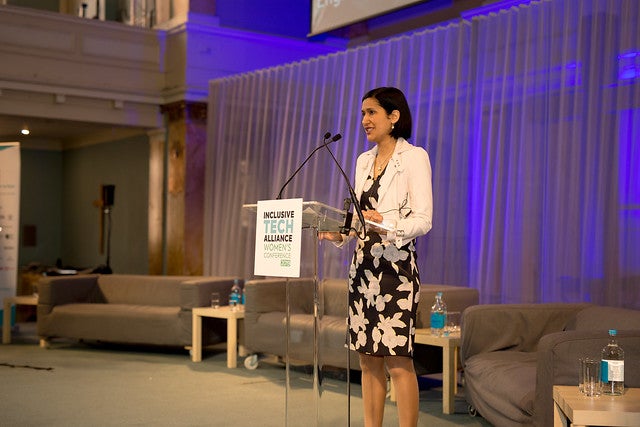
Keynote speech by Dr Hayaatun Sillem, CEO at Royal Academy of Engineering. (Photo credit: Dan Rvlph Photography).
Use your recruitment strategy to improve D&I
A recurring theme at the Women in Tech Leadership Conference was how recruitment can really shape your D&I – for the better or worse. Dr Sillem said that it’s simply not good enough to say you have D&I problems in your business because “that’s how it is” or “there’s a lack of the right talent pool”. You need to own the pipeline of your recruitment strategy, and delve into each step to unlock areas of improvement or change.
For example, looking at the terminology in your job ads, whether it’s flexible, and having a more diverse interview panel, can all help broaden your search, suggests Maria Hernandez, Head of Innovation at Cisco.
If your business uses recruitment agencies to find talent, ensure they have access to the right networks and hold them to account if they’re only putting forward the same selection of candidates.
Tech can help progress women into leadership roles
A panel including Wincie Wong, Co-founder of the RBS Girls Can Code network, and Joy Foster, Founder of TechPixies, discussed the many ways in which tech can help progress women into leadership roles.
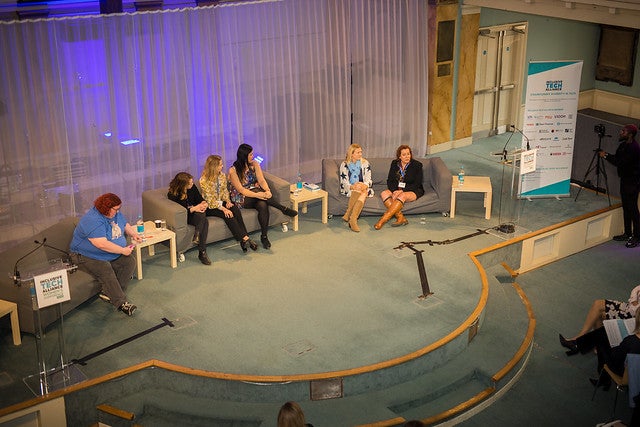
Discussion panel moderated by Meri Williams (far left) with (L-R) Lucy Yu, Director of Public Policy FiveAI; Lara Martini, Field Enablement Director at Microsoft; Wincie Wong, Co-founder of RBS Girls Can Code network; Joy Foster: Founder of TechPixies; and Audra Simons, Director at Forcepoint Innovation Labs. (Photo credit: Dan Rvlph Photography).
Online education through e-learning software, as well as mentorship, were cited as being amazing sources of tech for helping women progress and develop their skills to become leaders. Social media was deemed the perfect tool for self-promotion and getting involved in online communities, as well as being a useful resource for recruitment.
One million women need to join the UK tech sector today to achieve gender parity
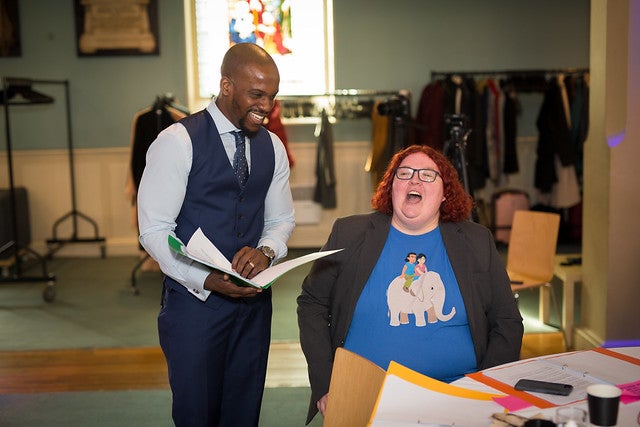
Samuel Kasumu, Managing Director of Inclusive Boards and Meri Williams, CTO of Monzo. (Photo credit: Dan Rvlph Photography).
Samuel Kasumu, Managing Director of Inclusive Boards, shared the board’s research into the current shortfall of people in tech roles. According to their data, there are 600,000 unfilled tech vacancies in the UK alone, which is expected to rise to 1.1 million by 2021. Further still, Kasumu explained that in order to achieve gender parity in the tech sector by 2021, one million women need to be recruited into the industry – today.

